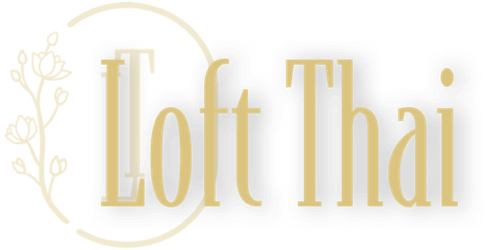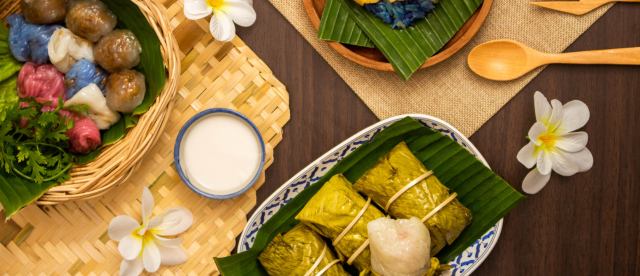
Nothing beats indulging in some delectable and refreshing Thai sweets after a soothing spa session. The top ten desserts to enjoy after a spa treatment offer the right blend of sweetness, creaminess, and tropical tastes, leaving you happy and invigorated.
From classics like Mango Sticky Rice and Coconut Ice Cream to lesser-known sweets like Thong Yot and Khanom La, these desserts give a distinct and authentic flavor to Thai food that will not disappoint. So, whether you're a first-time visitor to Loft Thai Spa or a seasoned traveler in Thailand, try these top 10 Thai desserts after your next spa treatment for an unforgettable experience.
1. Thai Custard Cake
Thai Custard Cake, also known as Khanom Mo Kaeng, is a delectable and popular Thai delicacy. It's a one-of-a-kind combination of soft, fluffy cake and sweet, creamy custard that strikes the right balance of textures and flavors.
Thai Custard Cake can be traced back to King Rama V's reign, who was noted for his fondness of European-style desserts. Inspired by the French dessert clafoutis, his cooks decided to develop their own version using Thai ingredients. As a result, the Thai Custard Cake was formed.
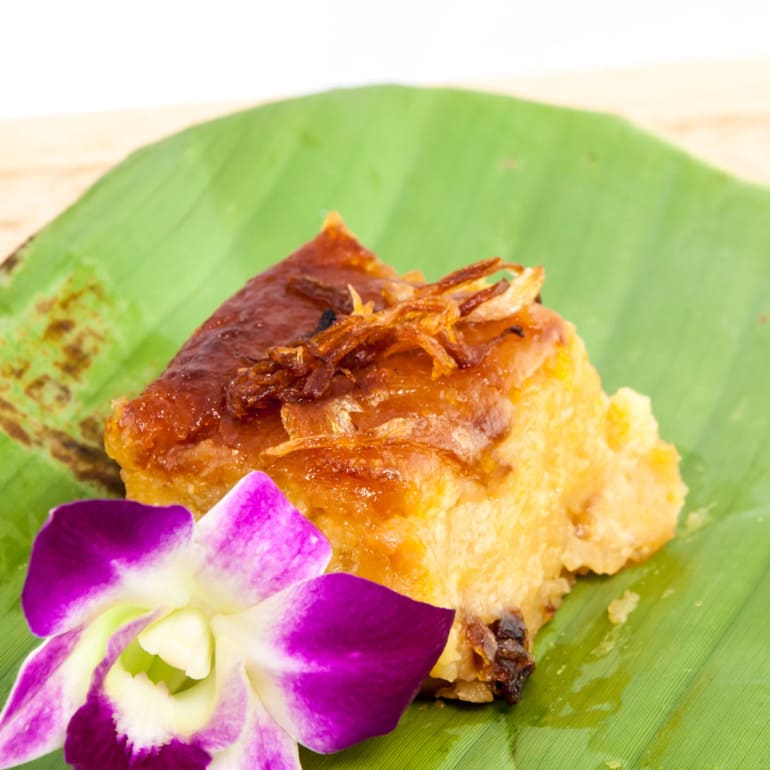
The cake's key ingredients are eggs, coconut milk, sugar, flour, and pandan leaves, which give it its trademark green hue and aromatic aroma. The custard layer is made of eggs, coconut milk, and sugar and is poured over the cake batter just before baking. After that, the cake is cooked until golden brown and the custard layer is set.
Thai Custard Cake is often served at room temperature or chilled, making it an ideal summer dessert. For extra texture and flavor, it is frequently served with shredded coconut or a sprinkle of sesame seeds.
2. Mango Sticky Rice
Mango sticky rice is a delicious Thai dessert that originated in the central region of Thailand. It is a sweet and creamy dessert made with sticky rice, fresh mango slices, and coconut cream. This dessert is commonly served during the summer months when mangoes are in season.
The origin of mango sticky rice can be traced back to the ancient kingdom of Ayutthaya, which was located in central Thailand. The kingdom was known for its agriculture and was a major rice-growing region. The people of Ayutthaya used rice in many of their dishes, including desserts.
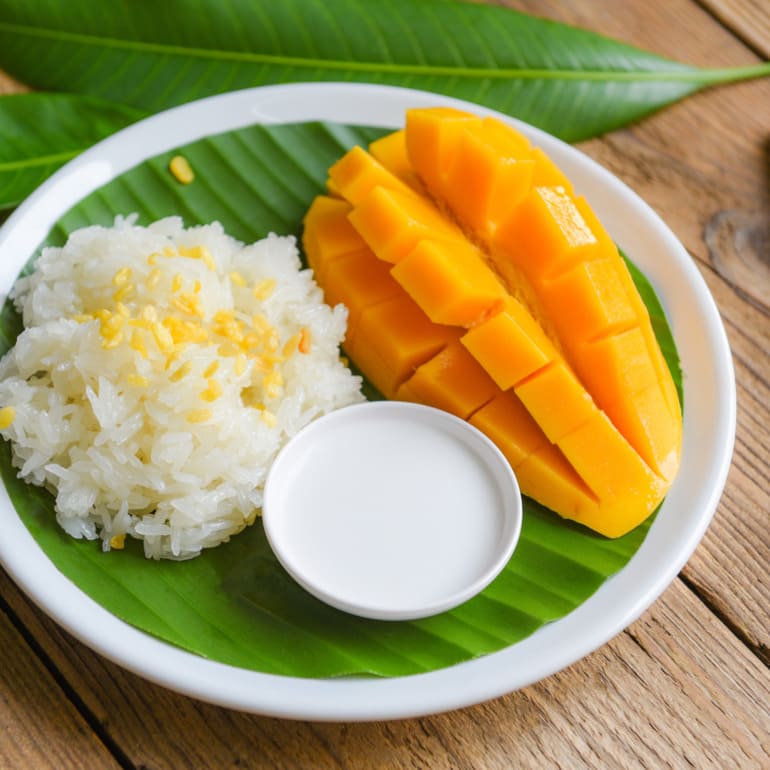
The dessert is made by first soaking glutinous rice in water for several hours, then cooking it in coconut milk and sugar until it becomes sticky and sweet. Once the rice is cooked, it is served with fresh mango slices on top and drizzled with more coconut cream. Some variations of the dessert may also include toasted sesame seeds or fried mung beans for added texture.
Mango sticky rice has become a popular dessert in many parts of the world, and it is easy to see why. The combination of sticky rice, sweet coconut cream, and juicy mango slices creates a unique and flavorful dessert that is both refreshing and satisfying.
3. Black Coconut with Sweet Topping
Khanom Taeng Kwa, or Black Coconut with Sweet Pudding, is a traditional Thai dish that mixes the creamy flavor of coconut with a sweet and chewy pudding. This Thai dish has a lengthy history and has been eaten for generations.
The origins of this dish are unknown, but it is thought to have originated in Thailand's central area. It's produced with simple components found in Thailand, such as coconut cream, black beans, sugar, and tapioca starch.
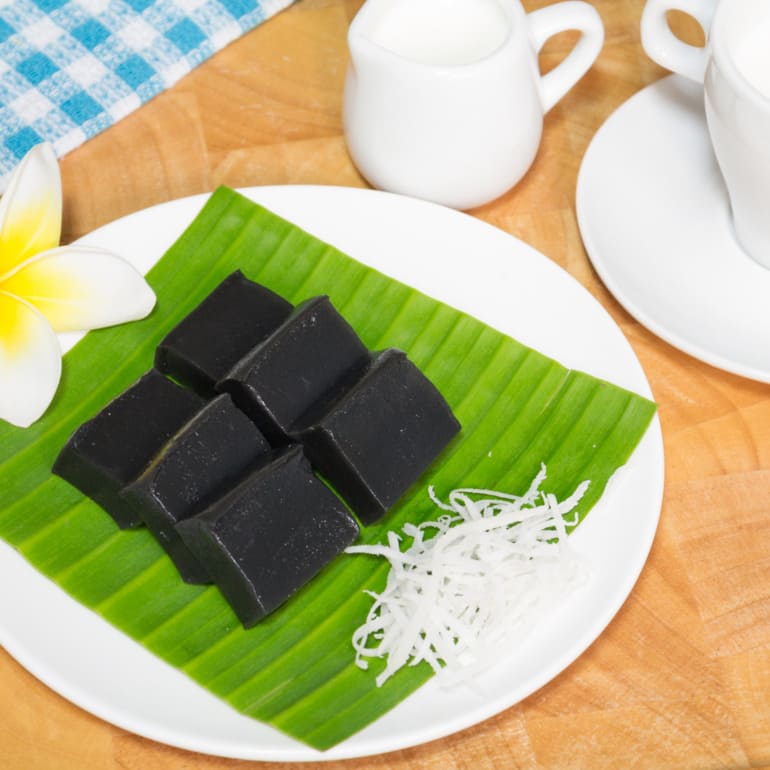
To make the dessert, soak the black beans overnight and then cook them till tender. Tapioca starch is combined with water before being added to the beans, along with sugar. After that, the mixture is heated until it thickens and creates a sweet pudding.
The coconut cream is cooked with sugar in a separate pot until it thickens and turns black. This black coconut cream is then mixed into the pudding, resulting in a rich and creamy dessert that is both sweet and salty.
Black Coconut with Sweet Pudding is usually served chilled with shredded coconut or sesame seeds on top. It is a famous Thai delicacy, especially during festivals and special events. The dessert's distinct combination of flavors and textures distinguishes it.
4. Thai Custard with Pumpkin
Thai Custard with Pumpkin (Sangkhaya Fak Thong) is a traditional Thai dish made by blending creamy custard with sweet pumpkin. It is a traditional Thai dessert that has been savored for generations.
This dessert's origins are unknown, but it is thought to have originated in central Thailand. This dessert's key ingredients are eggs, coconut milk, sugar, pumpkin, and pandan leaves.
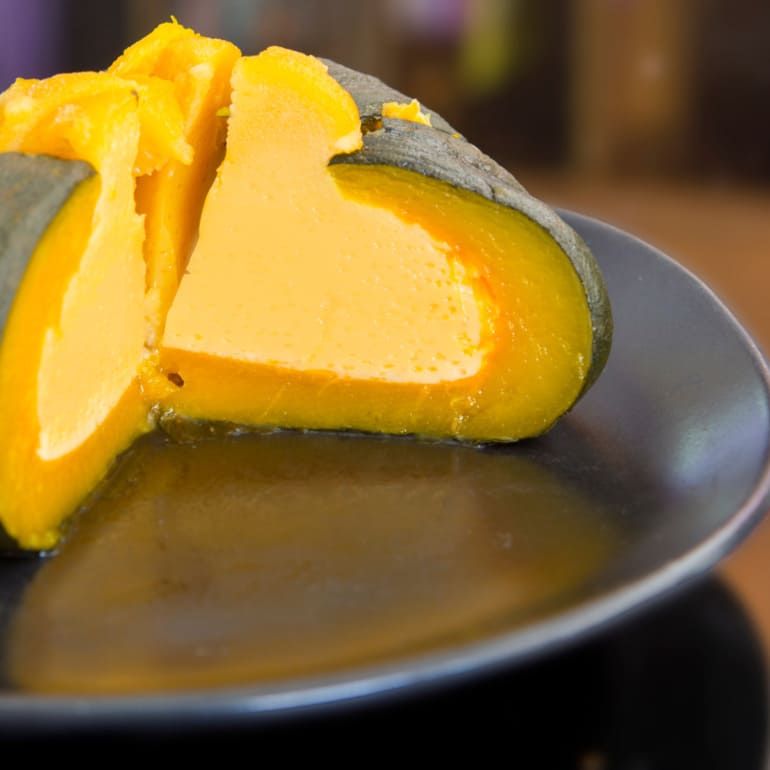
To begin making the dish, the pumpkin is cooked and mashed until smooth. The custard layer is prepared by combining eggs, coconut milk, sugar, and pandan leaves, which contribute to the dessert's aromatic perfume and distinct flavor. The pumpkin puree is then mixed into the custard, resulting in a creamy and delicious dessert.
After that, the mixture is poured into small bowls or cups and cooked until firm. It is then allowed to cool before serving chilled or at room temperature. For extra texture and flavor, it is frequently topped with shredded coconut or sesame seeds.
Thai Custard with Pumpkin is a favorite Thai dessert, especially during the harvest season when pumpkins are in abundance. With its combination of sweet and savory flavors, it is an ideal dessert for people looking to experience something new and different.
5. Tua Guan
Tua Guan, or Mung Bean Pudding, is a traditional Thai dish prepared from mung beans. This Thai dish has a lengthy history and has been eaten for generations.
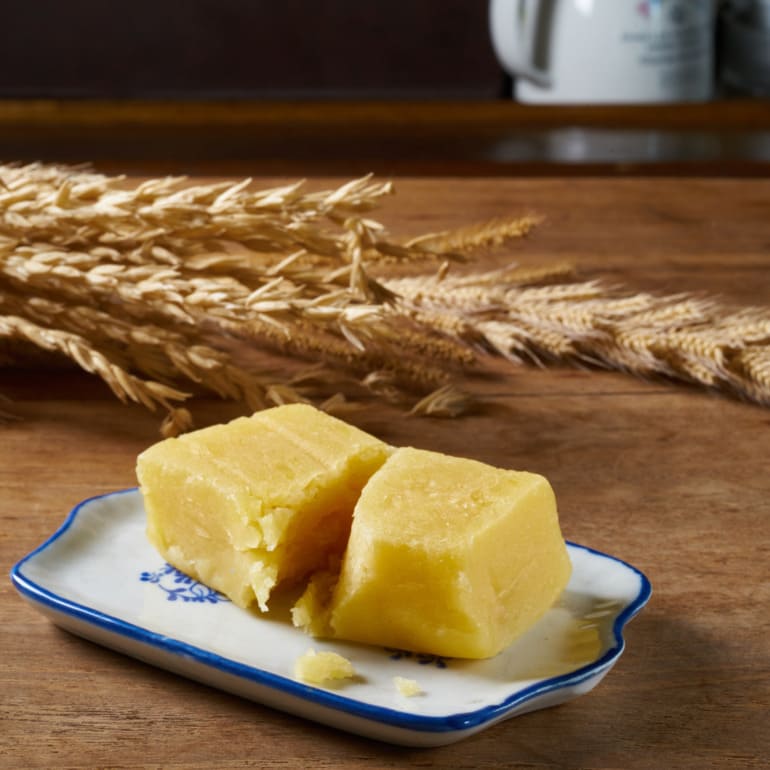
Tua Guan's origins can be traced back to the influence of Chinese cuisine on Thai culinary culture. The recipe was inspired by a Chinese delicacy made with mung beans and sticky rice flour. The Thai variant is made entirely of mung beans and seasoned with pandan leaves.
Mung beans, sugar, coconut milk, pandan leaves, and salt are the major ingredients in this dish. To make the dessert, soak the mung beans overnight before boiling them till soft. They are then ground into a fine pulp, combined with sugar and salt, and boiled with coconut milk and pandan leaves until the mixture thickens into a pudding.
Tua Guan is often served cold with shredded coconut or sesame seeds on top. It's a light and refreshing dessert that's ideal for hot summer days. It's also high in protein and fiber, making it a nutritious dessert option.
Tua Guan is a beloved dessert in Thailand and is often served at special occasions such as weddings and festivals. Its popularity has spread to other parts of the world, and it can now be found in many Thai restaurants and dessert shops worldwide.
6. Cocunut Milk Jelly
Woon Gati, or Coconut Milk Jelly, is a refreshing and sweet Thai treat prepared with coconut milk and agar, a form of seaweed. This Thai dish has a lengthy history and has been eaten for generations.
Coconut Milk Jelly's origins can be traced back to the impact of Chinese cuisine on Thai food culture. The recipe was inspired by a Chinese treat prepared with agar and sugar. The Thai variation, which is flavored with pandan leaves, substitutes coconut milk for sugar water.
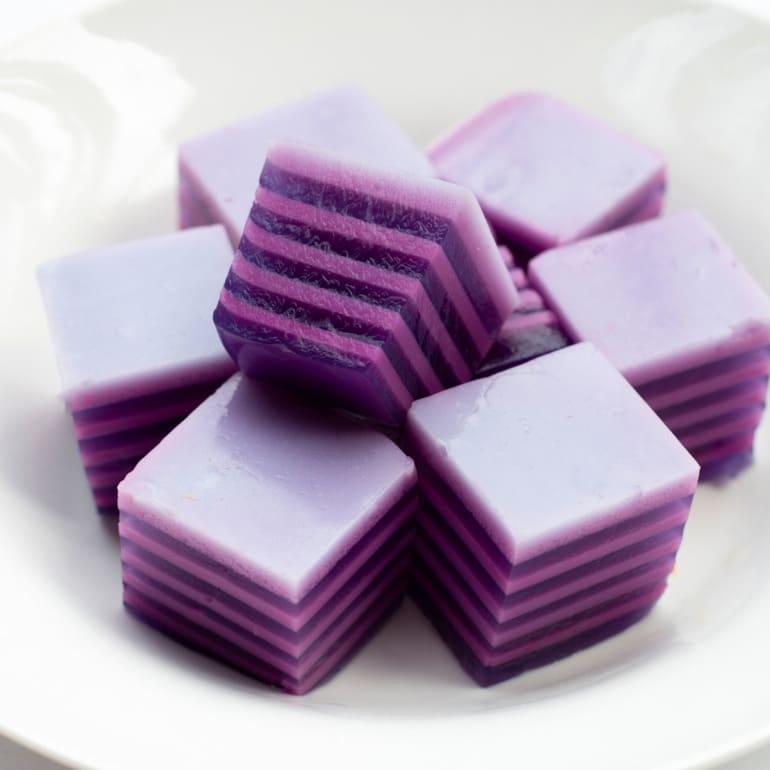
Coconut milk, agar agar, sugar, pandan leaves, and salt are the major ingredients in this dish. To make the dessert, heat the coconut milk with the sugar and pandan leaves until the sugar dissolves. After that, agar agar is added to the mixture, which is cooked until the agar dissolves and thickens.
The mixture is then put into molds and refrigerated to solidify. When the Coconut Milk Jelly has set, it is removed from the molds and cut into bite-sized pieces. It's usually served cold, with shredded coconut or fresh fruit on top.
Coconut Milk Jelly is a popular dessert in Thailand, particularly during the hot summer months when a refreshing and light dessert is needed. Its popularity has spread to other parts of the world, and it can now be found in many Thai restaurants and dessert shops worldwide.
7. Steamed Pandan Layered Cake
Steamed Pandan Layered Cake, also known as Kueh Talam in Southeast Asian nations such as Thailand, Indonesia, and Malaysia, is a popular delicacy. This dessert has been relished for generations in these areas and has a long history.
The impact of Chinese cuisine on Southeast Asian food culture can be traced back to the origins of Steamed Pandan Layered Cake. The recipe was inspired by a traditional Chinese dessert prepared of rice flour, sugar, and coconut milk. Pandan leaves are used in the Southeast Asian version to lend a fragrant aroma and unique flavor to the cake.
Rice flour, pandan leaves, sugar, coconut milk, and salt are the major ingredients in this dish. Pandan juice is prepared by mixing pandan leaves with water, which is then combined with rice flour, sugar, and salt to make the dessert. To make a batter, add coconut milk to the ingredients.
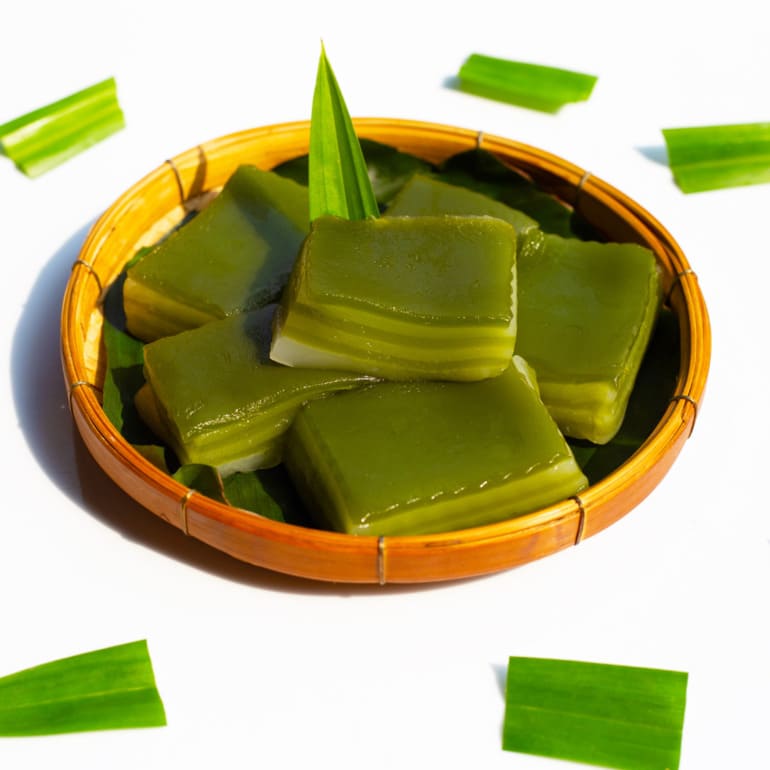
The batter is then layered and cooked, with the pandan layer on the bottom and the coconut milk layer on top. Typically, the cake is steamed for 15 to 20 minutes, or until it is cooked through and set.
Thai and other Southeast Asian countries like Steamed Pandan Layered Cake as a dessert. It is commonly served as a snack or dessert in street markets and traditional bakeries.
8. Golden Drop Egg
Thong Yod, or Golden Drop Egg, is a classic Thai dessert that is popular during special occasions like weddings and festivals. This Thai dish has a lengthy history and has been eaten for generations.
The Golden Drop Egg can be traced back to Chinese cuisine's influence on Thai food culture. The recipe was inspired by a Chinese delicacy prepared with egg yolks and sugar. The Thai version follows a similar procedure but includes fragrant pandan leaves for a distinct flavor.
This dessert's major ingredients are egg yolks, sugar, pandan leaves, and water. To make the dessert, whisk together egg yolks, sugar, and pandan juice until creamy. After that, the mixture is filtered to remove any lumps.
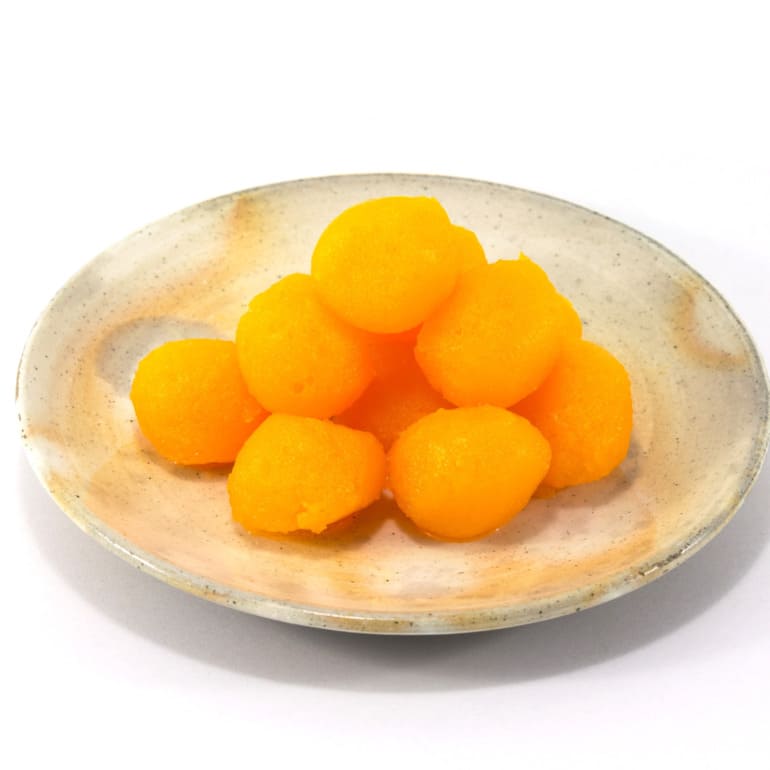
After that, the material is poured into little molds shaped like miniature flowers, droplets, or balls. After that, the molds are heated until the dessert is cooked through and set. Once cooked, the Golden Drop Egg is removed from the molds and soaked in sugar syrup.
Golden Drop Egg is a famous Thai dish, especially for special occasions and festivals. It's frequently served with other traditional Thai desserts like mango sticky rice and coconut pudding. Its popularity has extended around the world, and it can now be found in many Thai restaurants and dessert stores around the world.
9. Coconut Ball
Coconut Ball, also known as Khanom Tom, is a traditional Thai dessert served as a sweet snack or as an after-dinner treat. This Thai dish has a lengthy history and has been eaten for generations.
Coconut Ball's origins can be traced back to the impact of Chinese cuisine on Thai food culture. The recipe was inspired by a Chinese delicacy made with sticky rice flour and sugar. The Thai version follows a similar procedure but includes shredded coconut for a distinct flavor and texture.
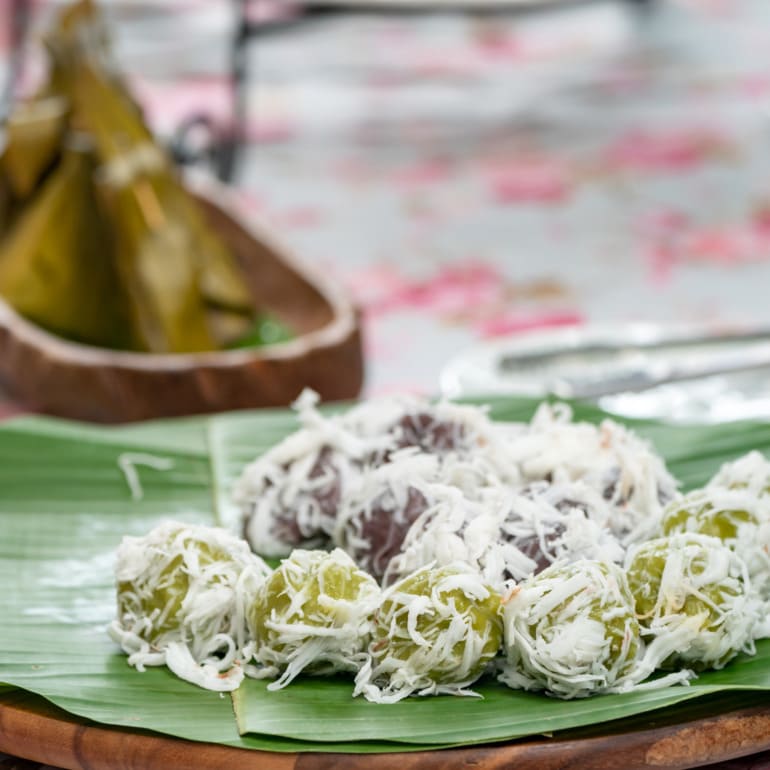
This dessert's key ingredients are sticky rice flour, shredded coconut, sugar, and pandan leaves. The dough for the dish is produced from glutinous rice flour, water, and pandan juice. After that, the dough is divided into little balls and flattened into discs. The center of each disc is then filled with shredded coconut and sugar. The dough is then rolled into a ball after being sealed around the filling.
The balls are then steamed until fully done and the filling is soft and sticky. After cooking, the Coconut Balls are rolled in more shredded coconut to coat them.
Coconut Ball is a favorite Thai treat, especially for special occasions and festivals. It's frequently served with other traditional Thai treats like mango sticky rice and pandan-flavored sweets. Its popularity has extended around the world, and it can now be found in many Thai restaurants and dessert stores around the world.
10. Egg Yolk Fudge Balls
Foi Thong, or Egg Yolk Fudge Balls, is a traditional Thai dessert that is popular at important occasions such as weddings and festivals. This Thai dish has a lengthy history and has been eaten for generations.
The impact of Portuguese cuisine on Thai food culture can be traced back to the origins of Egg Yolk Fudge Balls. The meal was inspired by the Portuguese delicacy fios de ovos, which is created using egg yolks. The Thai version follows a similar procedure but adds palm sugar and coconut milk to give it a distinctive flavor.
This dessert's major ingredients are egg yolks, palm sugar, coconut milk, and pandan leaves. To make the dessert, egg yolks are whisked together until smooth then mixed with palm sugar and pandan juice. The mixture is then strained to remove any lumps.
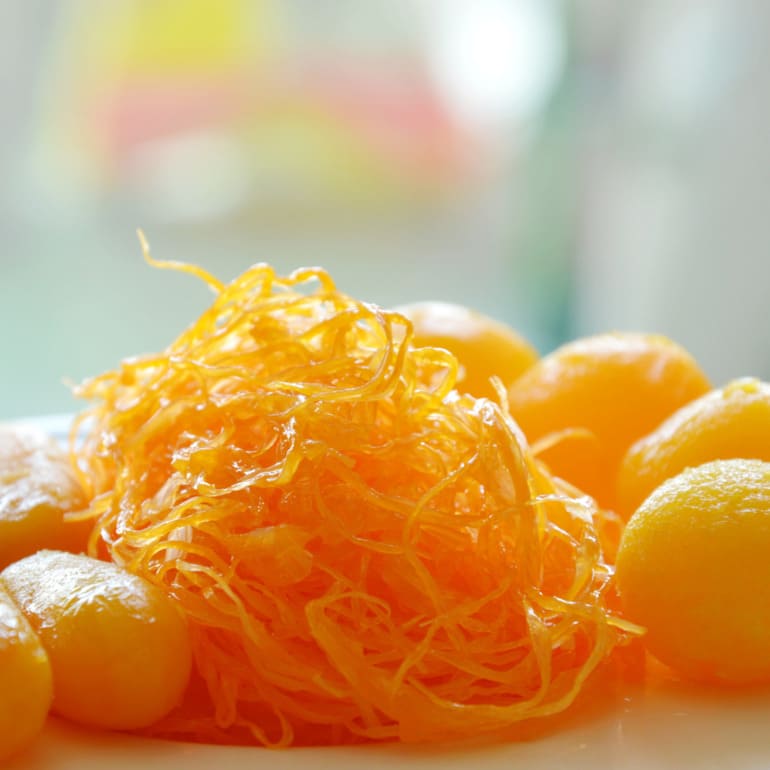
The liquid is then passed through a fine-mesh sieve to form thin strands of egg yolk fudge. These strands are then formed by hand into tiny balls.
The balls are then fried in sugar syrup until they are covered but still a little mushy on the inside. When the Egg Yolk Fudge Balls are done, they are removed from the syrup and placed on a plate to cool.
In Thailand, Egg Yolk Fudge Balls are a favorite delicacy, especially for special occasions and festivals. It's frequently served with other traditional Thai desserts like sticky rice with mango and coconut pudding. Its popularity has expanded throughout the world, and it is currently available in many Thai restaurants and desserts.
